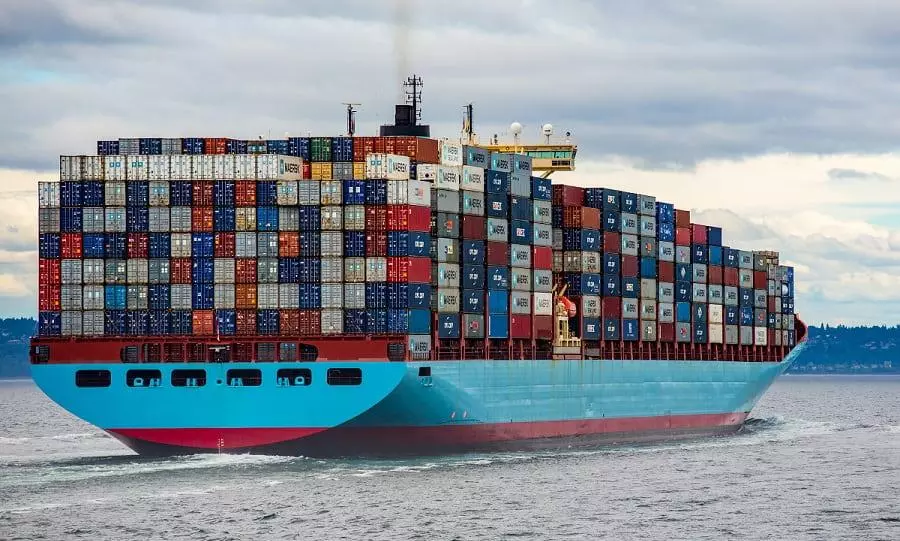Maritime chokepoints expose supply chain vulnerability: UNCTAD
Traffic through Panama and Suez Canals - critical arteries of global trade - dropped by over 50% by mid-2024.

The global economy, food security and energy supplies are at increasing risk due to vulnerabilities at key maritime routes, according to The Review of Maritime Transport 2024 from UN Trade and Development (UNCTAD).
The latest report reveals that critical chokepoints - such as the Panama Canal (connecting the Pacific and Atlantic Oceans), the Red Sea and the Suez Canal (linking the Mediterranean Sea to the Indian Ocean via the Arabian Peninsula) and the Black Sea (an important hub for grain exports) - are under severe strain. "A combination of geopolitical tensions, climate impacts and conflicts have shaken global trade, threatening the functioning of maritime supply chains."
Maritime trade, which grew by 2.4 percent in 2023 to reach 12,292 million tonnes, had begun to recover after a contraction in 2022, the report added. "However, the future remains uncertain. The report projects a modest two percent growth for 2024, driven by demand for bulk commodities like iron ore, coal, and grain, alongside containerised goods. Yet, these figures mask deeper challenges. Container trade, which grew by just 0.3 percent in 2023, is expected to rebound by 3.5% in 2024 but long-term growth will depend on how the industry adapts to ongoing disruptions such as the war in Ukraine and rising geopolitical tensions in the Middle East.
“Meanwhile, the supply of container ship capacity grew by 8.2 percent in 2023. Disruptions at key maritime chokepoints, which temporarily increased demand for ships by lengthening shipping routes, have helped ease the issue of overcapacity. However, if shipping routes return to normal, the imbalance between supply and demand could lead to container vessel overcapacity."
Rebeca Grynspan, Secretary-General, UNCTAD says: "Building sustainable and resilient maritime transport and future-proofing global supply chains is not just an option – it’s a strategic necessity.”
Disruptions at major maritime chokepoints
Key shipping routes have faced significant disruptions, causing delays, rerouting and higher costs, the report added. "Traffic through the Panama and Suez Canals - critical arteries of global trade - dropped by over 50 percent by mid-2024, compared to their peaks. This decline was driven by climate-induced low water levels in the Panama Canal and the outbreak of conflict in the Red Sea region affecting the Suez Canal. Meanwhile, the tonnage of ships transiting through the Gulf of Aden and the Suez Canal fell by 76 percent and 70 percent, respectively, compared to late 2023.
"Cargo rerouting around the Cape of Good Hope (southern tip of Africa) has surged, with ship capacity arrivals increasing by 89 percent. While this helps maintain the flow of goods, it adds significantly to costs, delays and carbon emissions. For example, a typical large container ship carrying 20,000–24,000 TEUs on the Far East-Europe route incurs an additional $400,000 in emissions costs per voyage under the European Union’s Emissions Trading System (ETS) when diverting around Africa instead of using the Suez Canal."
Longer routes, higher costs
These longer routes have led to increased port congestion, higher fuel consumption, crew wages, insurance premiums and exposure to piracy. "Global tonne-miles rose by 4.2 percent in 2023, driving up costs and emissions. By mid-2024, rerouting vessels away from the Red Sea and Panama Canal had increased global vessel demand by three percent and container ship demand by 12 percent compared to what it would have been without these disruptions. This added significant pressure to global logistics and strained supply chains.
"Port hubs like Singapore and major Mediterranean ports are now under pressure as they cope with growing demand for transshipment services due to the rerouting of vessels. Congestion in these ports is adding another layer of complexity for global transport and trading networks."
Between March and May 2024, waiting times in Singapore nearly doubled from 24 to 40 hours while in Port Klang, Malaysia, the number went up from 20 to 26 hours. "Faced with low water levels linked to climate-induced droughts, draft restrictions in the Panama Canal in 2023 led to shipment delays and higher costs. This has impacted trade routes exporting grains and minor bulk commodities from the Americas to Asia, with a 31 percent increase in sailing distances for completed journeys and a 25 percent decrease in cargo volume."
By sector, technology exports from Asia – most notably green energy and artificial intelligence-related products – are expected to drive further recovery in global merchandise trade, the report added.
Key recommendations
As the maritime industry faces growing challenges, UNCTAD’s report urges coordinated efforts to navigate, adapt and thrive in the complex environment. It calls for addressing disruptions at maritime chokepoints, investing in low carbon and green shipping, enhancing port efficiency and adaptation, mainstreaming trade facilitation to improve hinterland connectivity and combating fraudulent ship registration. Additionally, the report emphasises the importance of monitoring freight market developments, assessing trends in shipping rates and their impacts supporting vulnerable economies.



